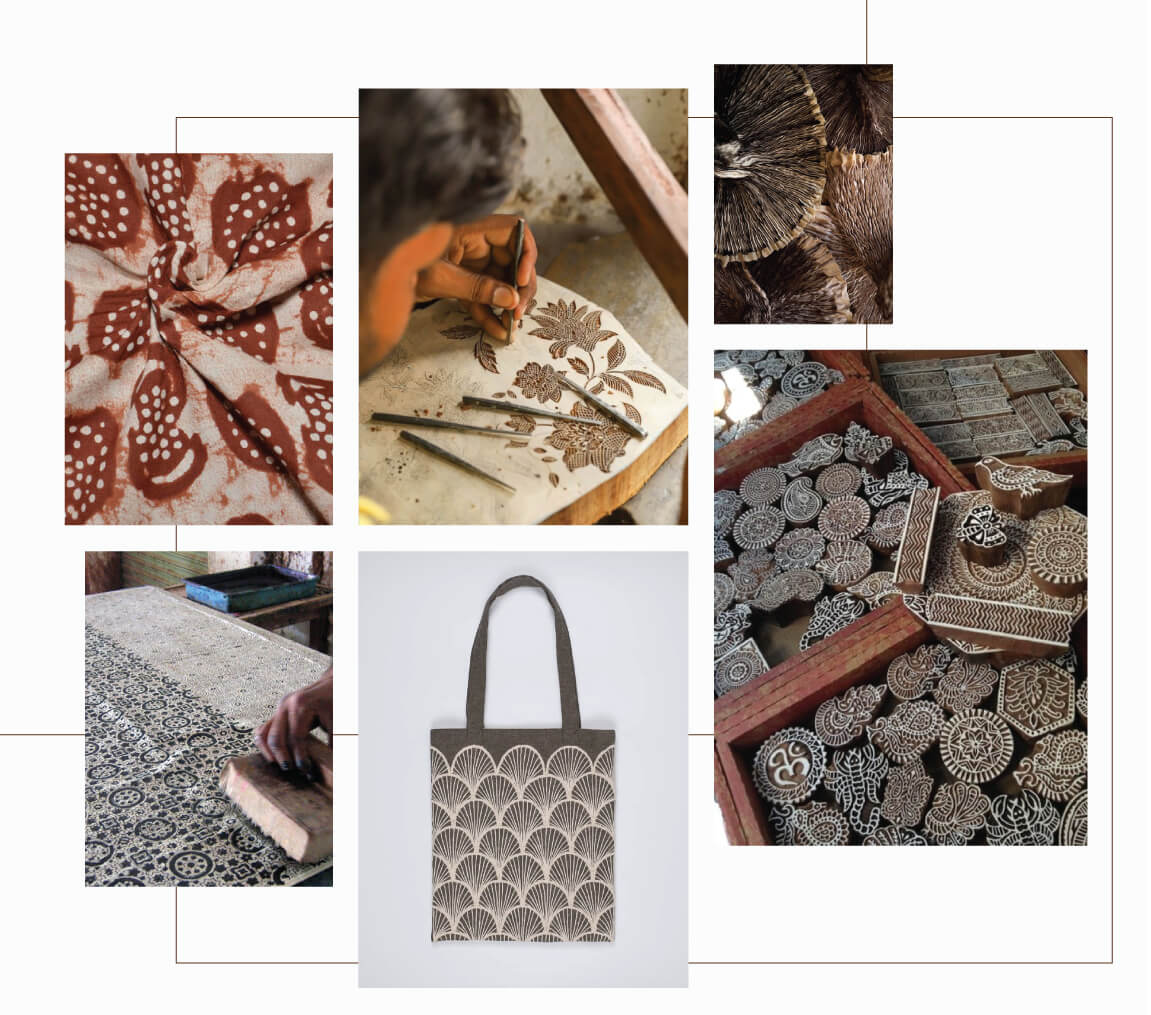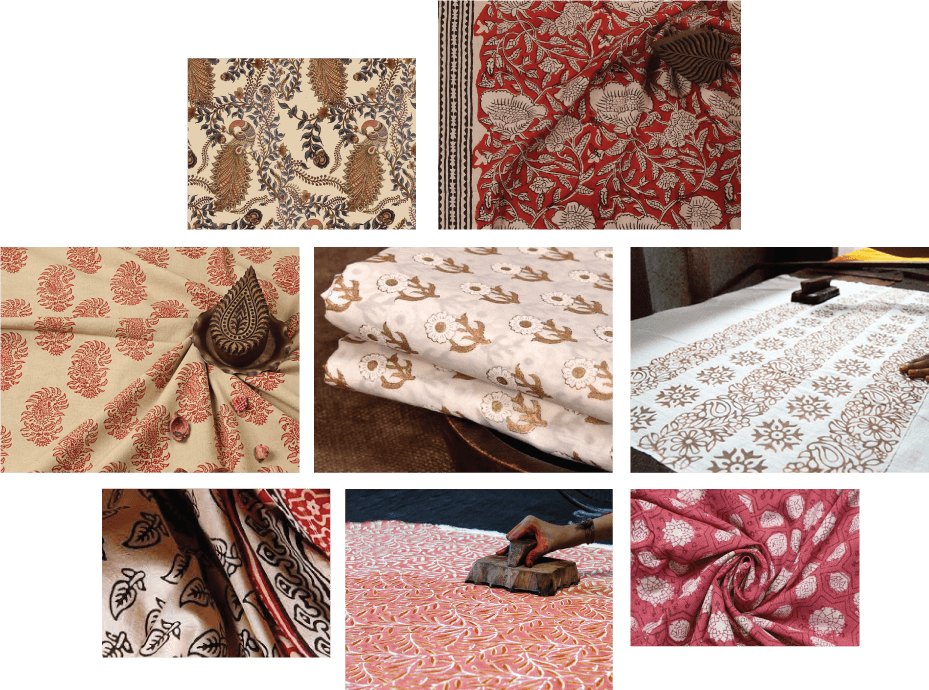
In a world compressed into a global village, where everyone can access everything from within the tiny box within their palms, we have all merged together to become international customers and sell products that work all across the globe, but in the process, we have also made the entire supply chain so saturated that distinctions are almost negligible. Not that it is a bad thing, after all, global citizens require versatile global products. But there is another segment of versatile products that are still rarely accessed: the Handicrafts.
Handcrafted products hold a lot of significance in any society. Handcrafted products like accessories, jewelry, rugs, ceramics, fabrics, hand-carved wood, and toys all tell a story. They are a representation of the identity of the person who makes them and give us a peek into their lifestyle. Most authentic handicrafts are made with indigenous products and raw materials that are locally sourced. The demand for which helps sustain and encourage the local markets and suppliers while also reducing the carbon footprint.
It is an important thing to remember that most handcrafted products are made primarily by the women of the house. In most developing countries where women have scarce opportunities to work, these products are a source of empowerment and income.
We at Deepwear have always believed and appreciated the beauty that handcrafted items provide and have made local handicrafts reach an international platform. Our handicraft program collaborated with a large and global network of workshops, artisans, and small-scale handmade manufacturers to understand and work with them better. Due to our strategic positioning in countries with strong Handicraft bases like India, Morocco, Portugal, Thailand, Indonesia, Vietnam, etc, we have an upper hand when it comes to dealing with projects related to them be it sourcing, manufacturing, buying, or designing. To discuss your ideas and explore more options, send us your query at enquire@deepwear.info or contact us.
It is a fact that most ancient art forms and practices were sustainable and extremely eco-friendly. One such art form is Block printing, which not only respects the nature we live among but highlights it too.

WHAT IS BLOCK PRINTING?
Hand Block printing has been a beautiful amalgamation of craftsmanship, talent, creativity, and patience of the maker. The name Block printing is quite self-explanatory. It simply means using blocks as a medium of transferring designs onto a piece of fabric. The materials, color, techniques all differ from region to region, but the core stays the same. Today variations of Block printing can be found in various parts of the world like India, China, Indonesia, etc. Using blocks to print designs onto textiles started in China 4000-4500 years ago, and the Chinese were able to create two primary techniques which later became the foundation of all modern-day Block printing techniques. They made blocks that worked around the positive and negative spaces of a design.
From China, the artform traveled to the west where it was well adapted by the Indian subcontinent, Indonesia, Thailand, and a few other countries, who used various techniques, materials, and skills to derive multiple versions of this art. A series of trials and tribulations in terms of materials, dyes, mordants, and fabrics enabled the Indian artisans to compile complex yet unique designs with a hint of its origin (South East Asia) and other cultural influences like the Mughal palaces to European cities. Combining these influences with its own diversity of indigenous cultures and communities has resulted in one of the widest and most ornate pattern galleries ever.

TYPES OF BLOCK PRINTING TECHNIQUES
AJRAK
Ajrak is an Indian Print whose name is derived from the Arabic word Azrak which means Blue as Indigo is one of the predominant colors used in this technique. It is one of the oldest printed fabrics known to man.
BAGH
Bagh is a unique style of block printing on handloom textiles. It is practiced on a white background with red and black prints on it, The chemical properties of the local river Bagh, enhance the unique shades and make them prominent.
KALAMKARI
Kalamkari is a beautifully long process that requires almost 17 different steps, but the end designs are soo gorgeous it is definitely worth the effort. Found in Iran and India, this particular printing is only done on pure cotton fabrics with hand-carved wooden blocks and completely natural dyes.
DABU
Dabu block printing is a resist printing technique. It is done with dabu paste which is a mixture of Clay, guar gum, and sawdust which is then block printed onto the fabric and then dyed. It is said to have been originated in China but gained its popularity in Rajasthan, India.
KHADI
Traditionally made with the dust of precious metals such as gold and silver, Khadi printing resembles ornaments ideally for festivities and auspicious occasions such as weddings. Unlike other methods, this is a surface ornamentation technique and hence is done on fully finished textiles.
SANGANER
The uniqueness of the Sanganeri block printing is the fact that it is supported by natural factors like the local water, atmosphere, humidity, and the indigenous herbs and flowers used in the process. These prints borrow their designs from nature and are intricately designed.
BATIK
The Indonesian Batik also has a block-printed version where the wax is printed onto the fabric using a copper stamp called Cap. The printed wax resists the dyeing process to create gorgeous designs.
BAGRU
This technique is completely natural, right from the wooden blocks to the natural dyes, and is known for its effortless elegance and simplicity. Bagru prints combine natural organic designs with geometric motifs to create beautiful patterns.
To know more about working with these Hand block printing techniques, contact us

WORKING WITH TRADITIONAL BLOCK PRINTING
Hand Block printing is such a versatile print that it can be used across all product categories like Garments, Footwear, accessories, jewelry, Bags, and other lifestyle products. At Deepwear, we work with traditional artisans and collaborate with them to make the process of working with handicrafts accessible, transparent, ethical, hassle-free, and to bring consistency. We have our team present in the location of production to support and control the process.
- It is important to understand, that Working with artisans is very different from working with factories. Factories are more organized and equipped, but less flexible, whereas Artisans are flexible but lack organization and infrastructure. This is why working with Artisans, it is essential to keep these points in mind and plan things accordingly.
- For anyone working with artisans, you need to understand the fact that it is a handmade process. Which means that it will yield handmade results. Handprinted textiles are known for their uniqueness and so while working with these crafts, one needs to open to small inconsistencies, At the same time we need to bring the maximum amount of consistency possible, which can only be achieved by being on the ground, next to the process, which is exactly what Deepwear does.
- Being in a small setup, It is difficult to demand organization in the production process. This is why we are there on the ground, next to the artisans overseeing every step to ensure that everything happens according to plan. We help provide some sense of organization to the process which makes the process easier for both the artisan as well as the buyer.
- Sometimes it gets difficult to communicate thoughts to the artisans unless you have someone who knows the local language and this can lead to details being lost in translation. To prevent this situation, we have a global team, with a mixture of local and international team members who know the local languages of major production countries, and collectively as a team we know more than 30 languages.
- With a small and rural setup, it sometimes gets difficult to control the production process. With our presence next to the artisans and our experience of working with them, we try to understand their position, structure, cultures but we also explain our expectations in terms of quality and punctuality.
When it comes to traditional handmade textiles, it’s safe to say that Deepwear can help you. With our offices in Guanzhou-China, Noida-India & Bali-Indonesia, Turkey, Morocco, Thailand, Portugal, etc. We have already established a network of global artisans and workshops specialized in specific techniques. We have access to the best Handmade fabric markets and clusters in the world and combine that with a team of diverse, passionate, qualified, and professional members, you can approach us with trust and confidence. To know more about our services and possibilities, get in touch.